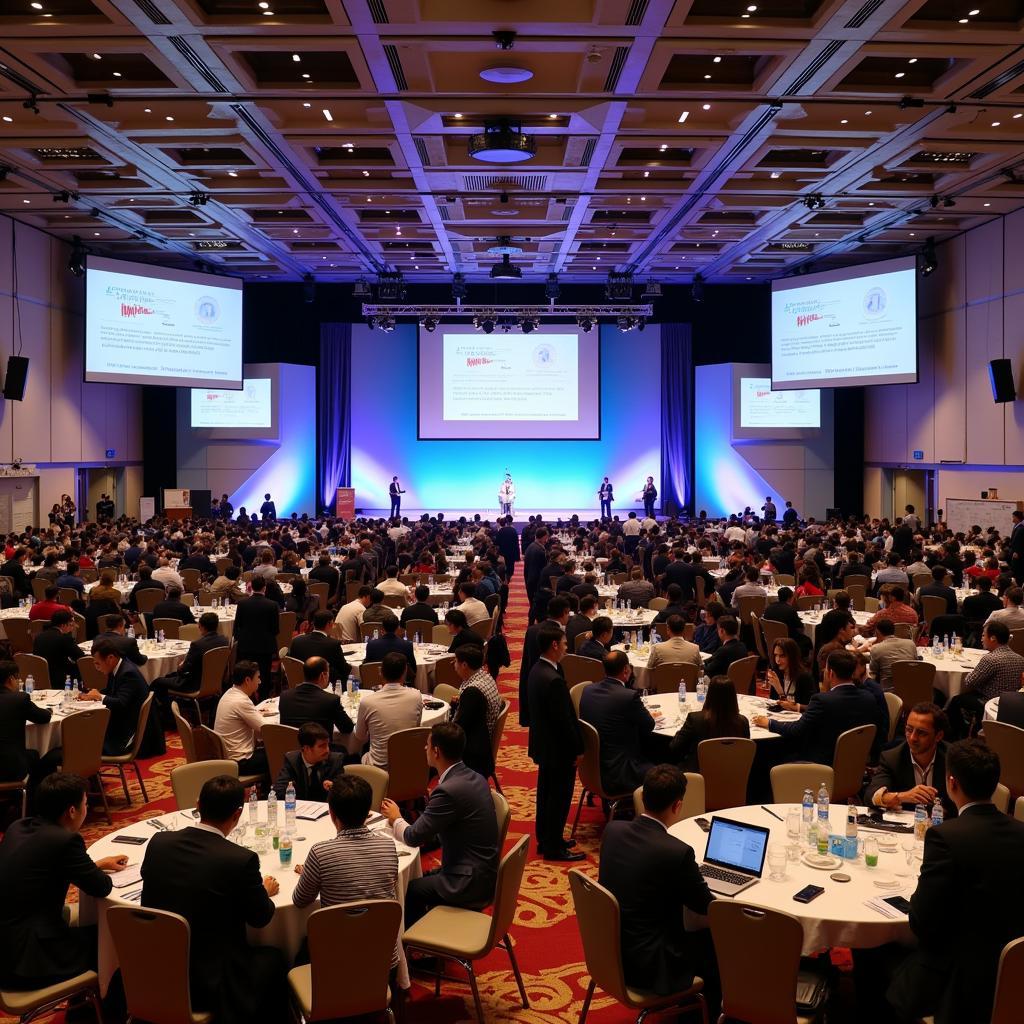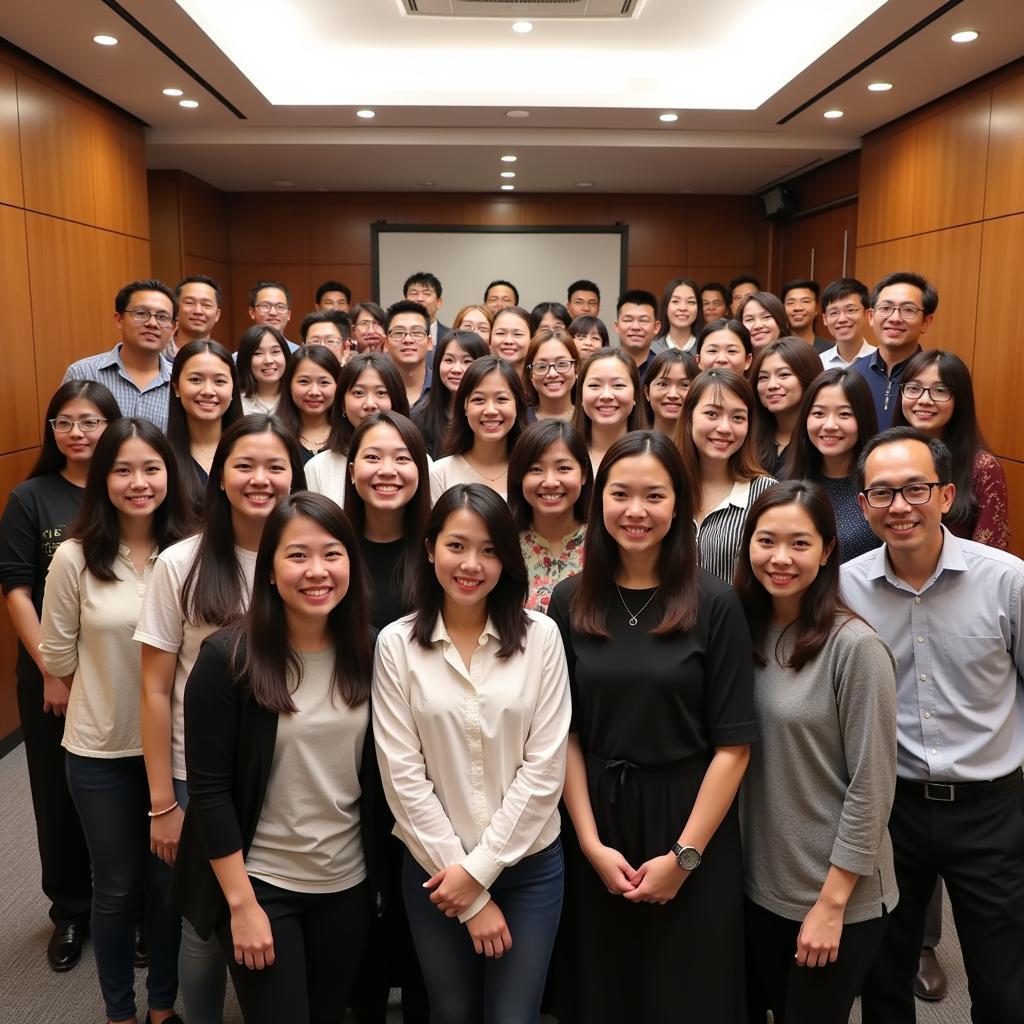As a melting pot of diverse cultures and a hub of rapid economic growth, Southeast Asia is also witnessing a burgeoning scientific landscape. “ASEAN Science” encompasses a vast network of research institutions, collaborative initiatives, and a growing pool of scientific talent all contributing to the advancement of knowledge and innovation within the region.
 ASEAN Science Research Collaboration
ASEAN Science Research Collaboration
ASEAN’s Scientific Potential: A Force to be Reckoned With
Several factors contribute to ASEAN’s scientific potential. The region boasts a young and increasingly educated population, providing a valuable human resource for scientific endeavors. Furthermore, ASEAN governments are increasingly recognizing the importance of investing in science, technology, engineering, and mathematics (STEM) education and research infrastructure.
 ASEAN Science Conference
ASEAN Science Conference
Key Areas of Focus: Addressing Regional Challenges
ASEAN science is strategically focusing on areas that directly address regional challenges and priorities. These areas include:
- Climate Change and Environmental Sustainability: Given ASEAN’s vulnerability to climate change impacts, research on renewable energy, disaster preparedness, and sustainable agriculture is paramount.
- Food Security: With a rapidly growing population, ASEAN scientists are working to enhance crop yields, improve livestock production, and ensure food safety.
- Health and Emerging Diseases: Infectious diseases remain a concern in the region. ASEAN science plays a crucial role in disease surveillance, vaccine development, and public health interventions.
- Digital Technologies: As ASEAN embraces the digital revolution, research in artificial intelligence, big data analytics, and cybersecurity is gaining momentum.
Collaboration: The Cornerstone of ASEAN Science
ASEAN science thrives on collaboration. Regional initiatives like the ASEAN Committee on Science, Technology, and Innovation (COSTI) facilitate cooperation among member states, fostering knowledge sharing and joint research projects.
 ASEAN Science Partnerships
ASEAN Science Partnerships
Additionally, partnerships with international organizations and universities provide ASEAN scientists with access to cutting-edge technologies and expertise. These collaborations are instrumental in tackling transboundary issues like air and water pollution, infectious disease outbreaks, and disaster management.
The Future of ASEAN Science: Innovation and Inclusivity
Looking ahead, ASEAN science is poised for continued growth and influence on the global stage. However, to fully realize its potential, ASEAN must focus on:
- Promoting Innovation: Fostering a culture of innovation through entrepreneurship, intellectual property rights protection, and commercialization of research findings will be key.
- Nurturing Talent: Investing in STEM education at all levels, providing opportunities for young researchers, and attracting skilled professionals from the diaspora will ensure a steady pipeline of scientific talent.
- Ensuring Inclusivity: Promoting gender equality in STEM fields, supporting scientists from underrepresented communities, and facilitating knowledge sharing across all ASEAN member states will be vital for maximizing the region’s scientific potential.
Conclusion
ASEAN science is a dynamic and rapidly evolving field, driven by regional collaboration, a commitment to addressing shared challenges, and a growing recognition of the power of innovation. By fostering a supportive ecosystem for science to flourish, ASEAN can leverage its scientific prowess to achieve sustainable development and secure a brighter future for its people.
FAQs
- What are the main funding sources for ASEAN science? Funding sources include government budgets, international development agencies, private sector investments, and philanthropic organizations.
- How can I get involved in ASEAN science initiatives? Numerous opportunities exist, including internships, research collaborations, and attending conferences. The ASEAN COSTI website provides information on various programs and initiatives.
- What are the career prospects for aspiring ASEAN scientists? Career paths in academia, government research institutions, and the private sector are expanding as ASEAN nations prioritize science and technology development.
Need assistance? Contact us:
Phone: 0369020373
Email: aseanmediadirectory@gmail.com
Address: Thon Ngoc Lien, Hiep Hoa, Bac Giang, Vietnam
Our dedicated customer support team is available 24/7 to assist you.

